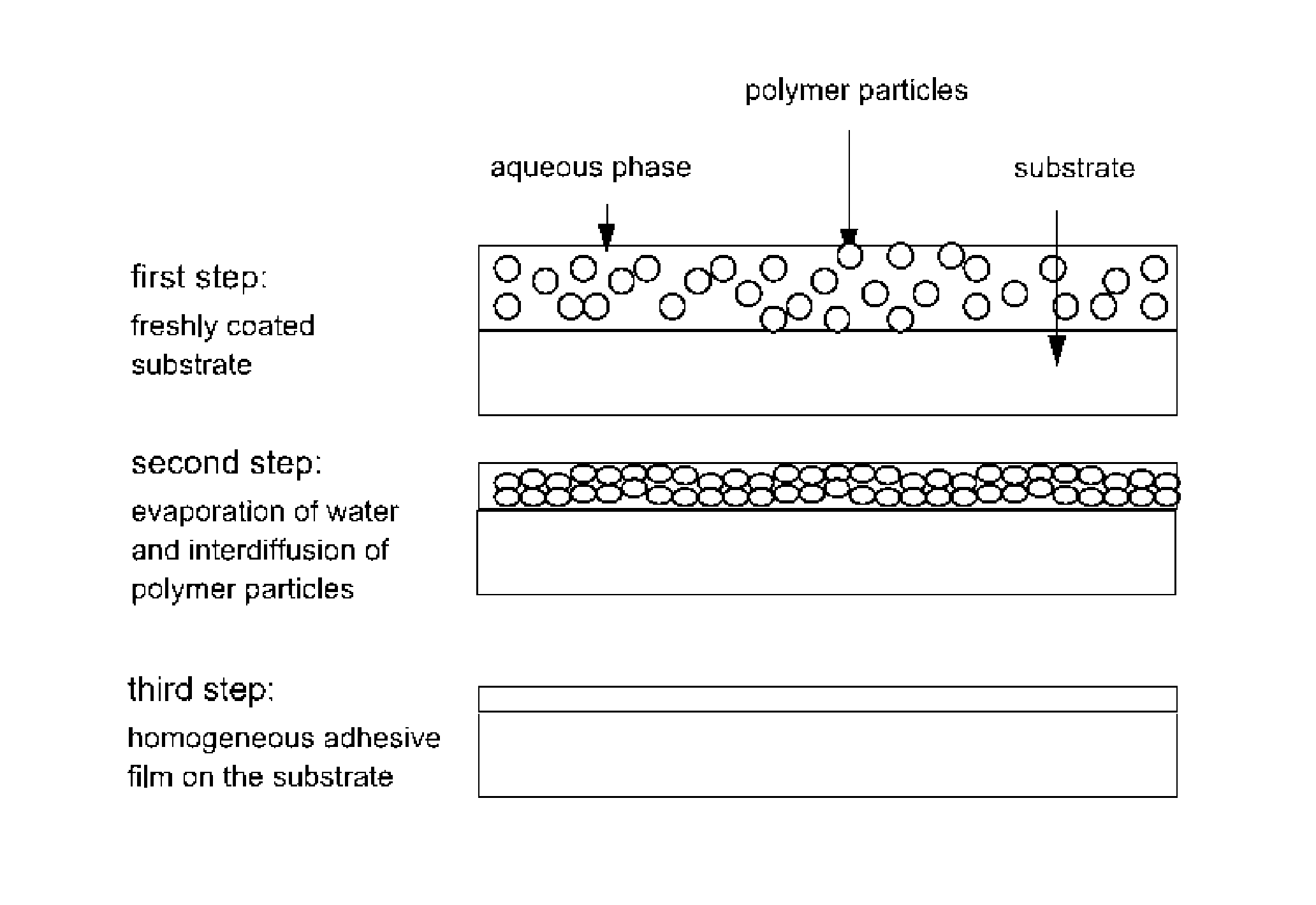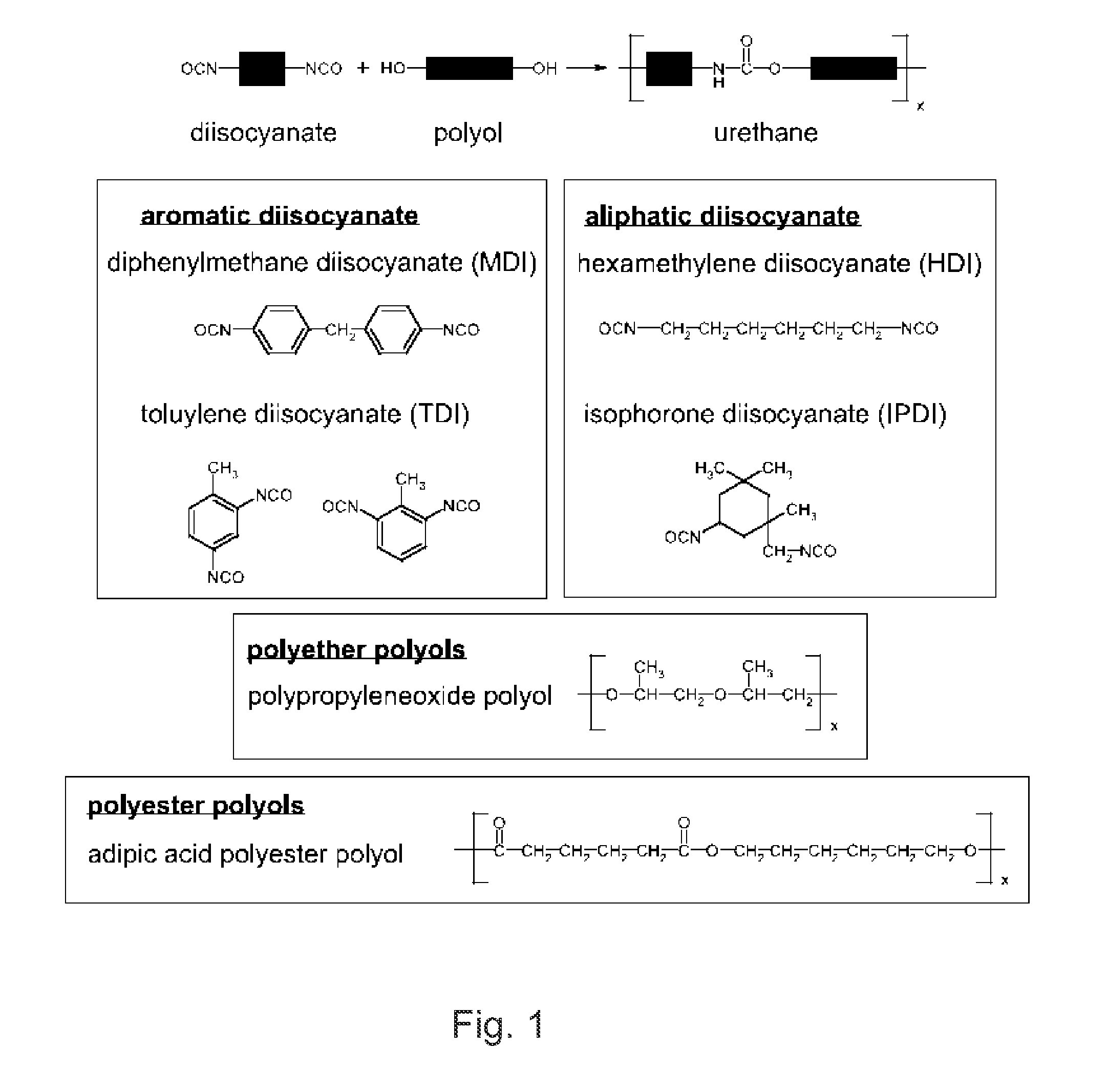Label and a method for attaching the label to an item
a technology of label and item, applied in the field of labels, can solve the problems of large amount of time lost in cleaning, large production process complexity, and messy wet-glue label operation, and achieve the effect of saving vital resources and manufacturing complexity
- Summary
- Abstract
- Description
- Claims
- Application Information
AI Technical Summary
Benefits of technology
Problems solved by technology
Method used
Image
Examples
Embodiment Construction
[0034]In the following, the invention will be explained in more detail.
Preparation of the Adhesive Layer
[0035]In the following, one possibility to prepare an adhesive for an adhesive layer will be explained.
[0036]Polyurethane adhesives are generally produced by reacting long-chain polyols with aromatic or aliphatic isocyanates using the diisocyanate polyaddition process. Among the polyurethane heat-activatable adhesives, the polymer backbone is primarily based on crystalline polyester polyols, but amorphous polyester polyols have also been used for the production of heat-activatable adhesives (see FIG. 1 which shows raw materials for the production of polyurethane dispersions).
[0037]In the production of polyurethane dispersions by the acetone process or the melt-dispersion process, use is made of emulsifiers integrated in the polymer chain. Hydrophilic modification can be carried out through the covalent integration of ionic groups in the polymer chain, or through long polyether uni...
PUM
| Property | Measurement | Unit |
|---|---|---|
| temperature | aaaaa | aaaaa |
| diameter | aaaaa | aaaaa |
| temperature | aaaaa | aaaaa |
Abstract
Description
Claims
Application Information
 Login to View More
Login to View More - R&D
- Intellectual Property
- Life Sciences
- Materials
- Tech Scout
- Unparalleled Data Quality
- Higher Quality Content
- 60% Fewer Hallucinations
Browse by: Latest US Patents, China's latest patents, Technical Efficacy Thesaurus, Application Domain, Technology Topic, Popular Technical Reports.
© 2025 PatSnap. All rights reserved.Legal|Privacy policy|Modern Slavery Act Transparency Statement|Sitemap|About US| Contact US: help@patsnap.com



